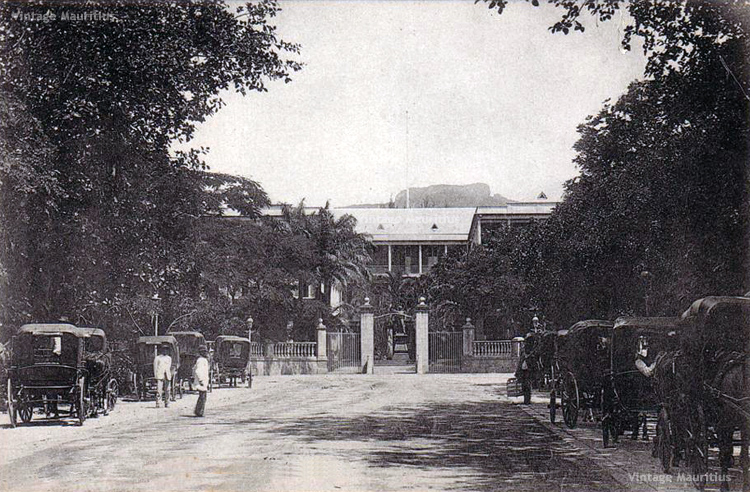
Port Louis – Place D’Armes Taxi Stand – early 1900s
At the beginning of 1860, the transport of passengers and goods was undertaken by about 2,000 horses, 4,000 donkeys and 4,500 carriages and carts. Animal-driven transport was the only sole method before the implementation of railway transport in Mauritius back in 1864. At the Place D’Armes, in front of the government house, we could see horse carriages as taxis at both sides of the street. Anyone willing to travel short distances could hire this early method of taxi service and would easily reach their destination, even though it could take some time. Long distances would sometimes require more than one relay for the carriages. This place at the ‘Place D’Armes’ has still kept this essence of taxi service but of course with current technology.
Overlooking the Government House, the Place D’Armes can be said to be the ’emblem’ of Port Louis. One the other opposite end we have the harbour and the way leading to the place where all government matters take place. During the early 1900, the island began to adopt motorised transport and little by little animal-driven transport were replaced.
The Place D’Armes some years back
The Place D’Armes nowadays



In 1930, the island had 3,016 vehicles: around 2,401 private cars, 300 taxis, 303 trucks, 92 buses and 220 motorcycles. In 1950, vehicles numbered in the 5,161 and went up to 13,291 in 1960 with the decline of the railways. In 1970, the number of vehicles nearly doubled, going to 25,389 motorised vehicles. This included 12,546 cars, 4,171 trucks, 722 buses and 5,383 motorcycles.Public transport, in the form of buses, grew in line with the demographic and economic growth of the island. Thus, buses numbered 186 in 1950, 488 in 1960, 722 in 1970 and 1,490 in 1980.
As of June 2011, 392,276 vehicles are registered on the island. 46% consists of cars and dual-purpose vehicles and 41% of motorized two-wheelers. The remaining 13% consists of vans, lorries and trucks, buses and other vehicles.
Click here to view our Port Louis facebook album








